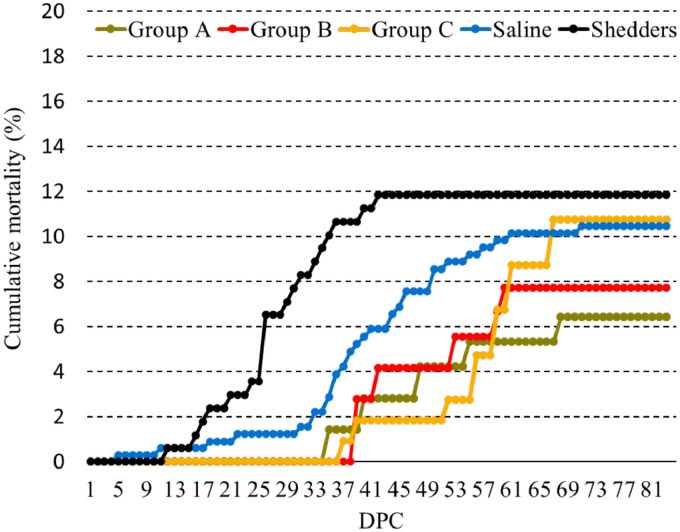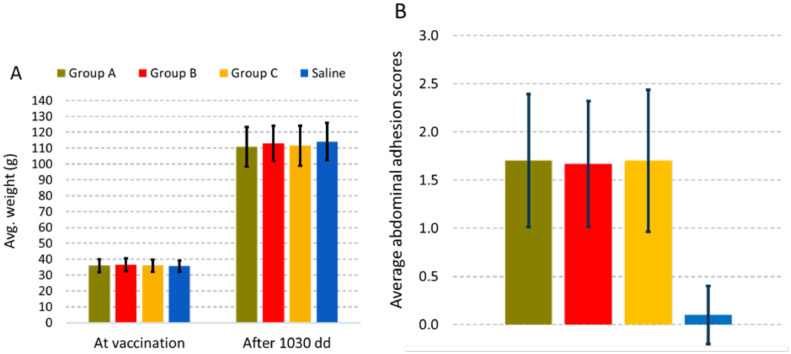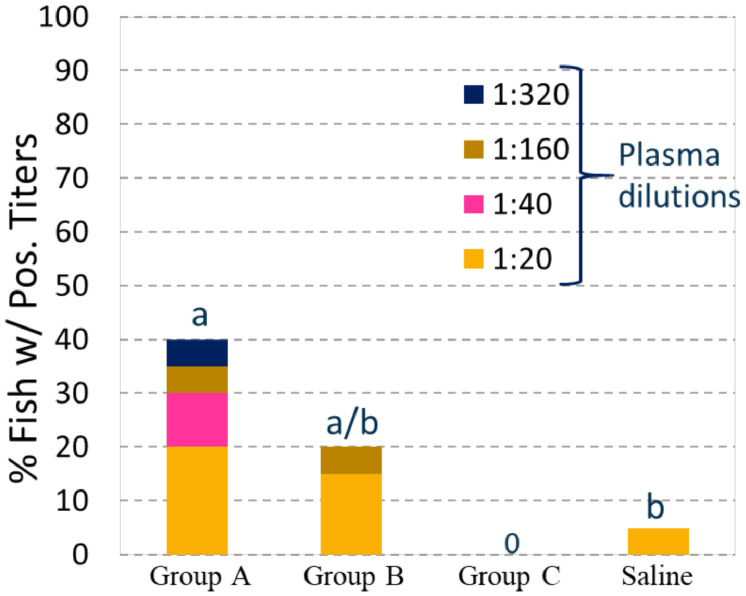Effects of a DNA and multivalent oil-adjuvanted vaccines against pancreas disease in Atlantic salmon (Salmo salar) challenged with salmonid alphavirus subtype 3
Abstract
Salmonid alphavirus (SAV) causes pancreas disease (PD) in Atlantic salmon (Salmo salar). In seawater-farmed salmonids in the southern part of Norway SAV subtype 3 (SAV3) is dominating. PD continues to cause significant economic and fish health concerns in this region despite years of extensive use of oil-adjuvanted vaccines (OAVs) containing inactivated whole virus (IWV) antigens. In the current study, three commercially available PD vaccines were tested. Group A got a DNA vaccine (DNAV) injected intramuscularly (i.m.) plus an OAV without a PD component injected intraperitoneally (i.p.). Groups B and C got different OAV IWV vaccines injected i.p., respectively. The control group was i.p. injected with saline. Approximately 12 weeks after vaccination, the post smolt groups were challenged in seawater with SAV3 by cohabitation. Samples were collected pre-challenge, and at 19, 54 and 83 days post-challenge (dpc). There were no differences in growth or visible intraperitoneal side effects between the immunized groups prior to challenge. Fish in group A had significantly higher SAV3 neutralizing antibody titers than the other groups pre-challenge and significantly lower SAV3 viremia levels than the control group at 19 dpc. Fish in group A had significantly more weight gain than the other groups measured at 54 and 83 dpc. Prevalence and severity of heart necrosis at 19 dpc and loss of exocrine pancreas tissue at 54 and 83 dpc were significantly lower in groups A and B compared to group C and controls. The cumulative mortality in the control group during the challenge period was 10.5%. Group A experienced the lowest mortality (6.4%) albeit not statistically different from the controls. The results suggest that DNAV may reduce the clinical and economic impact of PD by improved protection against SAV3-induced changes in pancreas tissue and growth impairment.




 求助内容:
求助内容: 应助结果提醒方式:
应助结果提醒方式:


